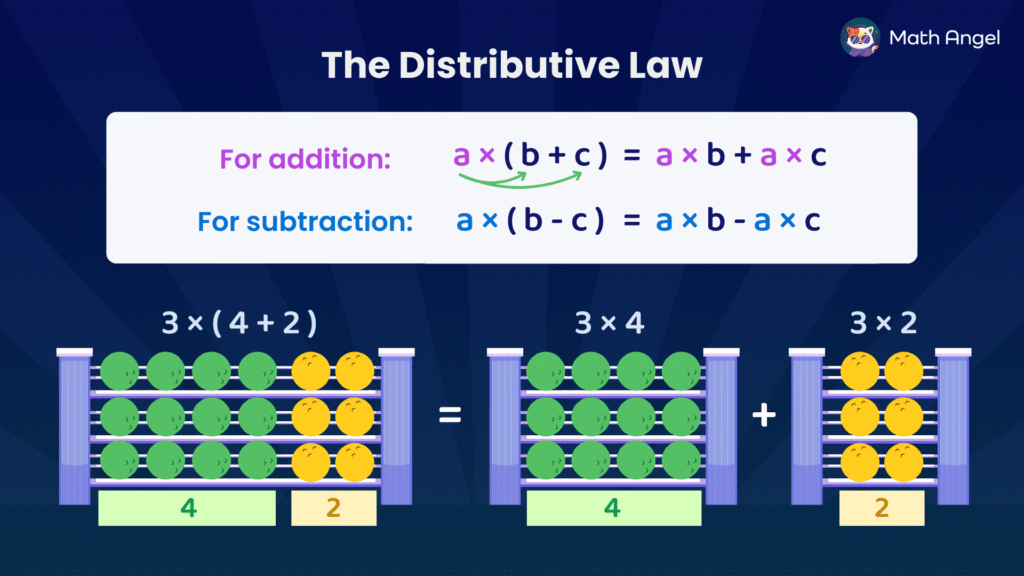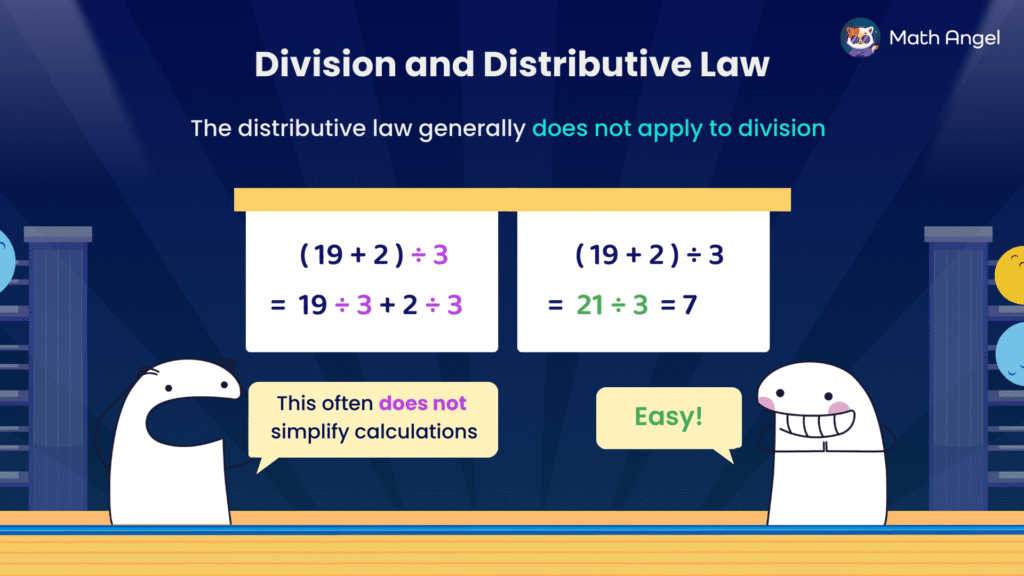🛎️ Definition of Distributive Property:
The distributive property is a rule that lets you multiply a number by each term inside brackets, one by one.
This property works for both addition and subtraction:
$$
\begin{align*}
a \times (b + c) &= a \times b + a \times c \\[0.7em]
a \times (b \;-\, c) &= a \times b \;-\, a \times c
\end{align*}
$$
🛎️ Understanding the Distributive Property Visually:
Imagine 3 rows of balls. Each row has 4 green balls and 2 yellow balls.
You can calculate the total number of balls in two ways:
- Multiply the number of rows by the number of balls in each row:
$$ 3 \times (4 + 2) $$ - Or, count green and yellow balls separately and then combine them: $$ 3 \times 4 + 3 \times 2 $$
Both ways give the same final answer.
That’s the magic of the Distributive Property:)
$$ 3 \times (4 + 2) = 3 \times 4 + 3 \times 2 $$





